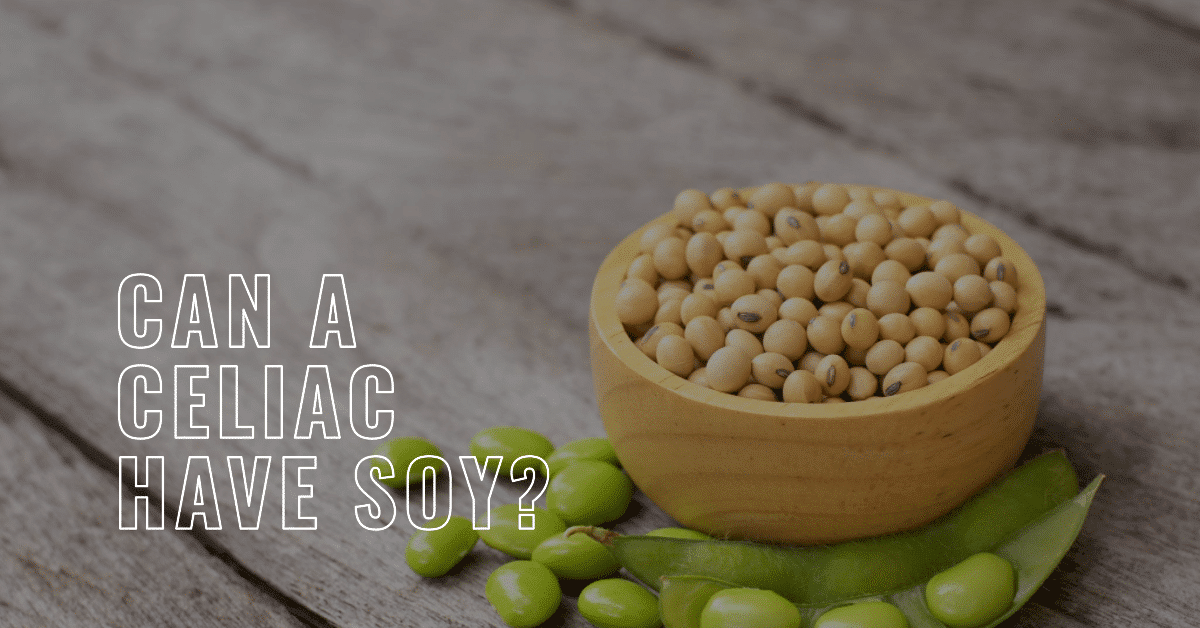Can a Celiac Have Soy? Uncovering the Facts

While maintaining a strict gluten-free diet is crucial for individuals with celiac disease, the question of can a celiac have soy remains a topic of discussion.
In most cases, celiacs can safely include soy in their gluten-free diet. Soy provides valuable nutrients and can be a great addition to meals.
However, it’s important to consider factors like cross-contamination and hidden gluten, which we’ll discuss in detail in this article.
Let’s dive in!
Understanding Soy and Celiac Disease
Soy, a versatile plant-based protein, often takes the spotlight as a meat alternative in vegetarian and vegan diets.
But what about individuals with celiac disease? Can they safely enjoy soy?
Let’s explore this question and shed some light on whether soy is a suitable option for those following a gluten-free diet.
Gluten-Free Soy Options
Many soy products are naturally gluten-free, making them safe for individuals with celiac disease to consume.
Soy milk, tofu, tempeh, soy sauce, and edamame are all examples of gluten-free soy options that can be easily incorporated into a celiac-safe diet.
However, it is important to check the labels of these products carefully to ensure that they have not been subject to gluten cross-contamination during production.
Soy and Gluten Sensitivity
Some individuals with celiac disease may also have a sensitivity to soy.
If you experience digestive problems, bloating, or other adverse reactions after consuming soy, it may be best to avoid it.
However, in many cases, soy is a safe and healthy addition to a gluten-free diet.
Soy Allergies vs. Celiac Disease
It is important to note that soy allergies are not the same as celiac disease.
Individuals with celiac disease steer clear of gluten, but soy is often a safe bet. Yet, hold on tight! Some sneaky soy products sneakily sneak in wheat as a filler. Sneaky, isn’t it?
So, be a label detective, my friend. Read them carefully to dodge gluten’s surprise attack.
Stay vigilant, avoid accidental gluten rendezvous, and keep your tummy happy. Remember, gluten-free living can be a puzzling adventure, but you’ve got this!
| Soy Products to Avoid for Celiacs | Gluten-Free Soy Alternatives |
|---|---|
| Soy sauce made with wheat | Tamari sauce (gluten-free soy sauce) |
| Soy-based meat substitutes with wheat gluten | Quinoa, lentils, black beans, and other legumes |
If you are unsure about whether a soy product is safe for celiacs, it is best to check with a healthcare provider or registered dietitian.
Alternatives to Soy for Celiacs
For many celiacs, soy products are a significant source of protein.
However, if you cannot consume soy or prefer to avoid it due to personal reasons, several alternatives are available.
| Source | Benefits |
|---|---|
| Eggs | High in protein and easy to digest. Can be cooked in various ways, making them a versatile ingredient in your diet. |
| Peas | High in protein and fiber, low in fat. Contain various vitamins and minerals, making them a nutrient-rich replacement for soy. |
| Lentils | Rich in protein, fiber, and iron. Can be used in soups, stews, salads, and other dishes as a meat substitute. |
| Quinoa | A complete protein, containing all nine essential amino acids. Low in fat and high in fiber, making it a filling and nutritious option. |
Other plant-based sources of protein that celiacs can consume include nuts, seeds, and beans.
However, it is important to note that some individuals with celiac disease may also have nut or legume allergies.
If you suspect you have an allergy, consult a healthcare professional to determine appropriate dietary choices.
Soy and Celiac Disease: Expert Insights
While the relationship between soy and celiac disease is complex, research shows that most people with celiac disease can safely consume soy.
According to Beyond Celiac, soybeans are naturally gluten-free and do not contain the same proteins as wheat, barley, and rye.
However, cross-contamination during manufacturing and processing can be a concern. As such, celiacs should look for products labeled as gluten-free, as they are required to comply with labeling regulations.
Overall, experts recommend that celiacs consult with their healthcare provider and a registered dietitian to determine if soy and other legumes should be included in their diet.
FAQ: Can a Celiac Have Soy?
As a celiac, it’s crucial to be mindful of what you eat to avoid triggering symptoms or further damage.
In this section, I’ll address some commonly asked questions about soy and its compatibility with celiac disease.
Let’s dive in and unravel the mysteries surrounding soy to help you make informed choices for your gluten-free journey.
Is Soy Safe for Celiacs?
Soy, in its natural state, does not contain gluten and can be safely consumed by individuals with celiac disease.
However, it’s important to note that some soy-based products might have traces of gluten due to potential cross-contamination during manufacturing or processing.
To ensure gluten-free consumption, it is always recommended to carefully read product labels and look for gluten-free certification on soy products.
What Are Some Gluten-Free Soy Options?
If you are a celiac and looking to incorporate soy into your diet, there are several gluten-free soy products available.
Look for products labeled as “gluten-free” or those that have been certified by a reputable gluten-free organization, such as the US-based GFCO or Coeliac UK in the United Kingdom.
Some popular gluten-free soy options include tofu, edamame, soy milk, and soy sauce made from tamari.
Can Soy Cause Gluten Cross-Contamination?
Yes, it is important to be cautious when it comes to potential gluten cross-contamination during the manufacturing or processing of soy products.
To ensure safety, it is advisable to opt for soy products that are certified gluten-free or carefully review the product labels before consuming them.
What Is the Difference Between Soy Allergies and Celiac Disease?
Soy allergies and celiac disease are two distinct conditions that may share similar symptoms.
Soy allergies occur when the immune system reacts to soy proteins, leading to symptoms like hives, breathing difficulties, and digestive issues.
Celiac disease, on the other hand, is an autoimmune condition where the body’s immune system attacks the small intestine in response to gluten proteins.
It leads to symptoms like diarrhea, abdominal pain, and malnutrition. While soy allergies are relatively common, celiac disease affects about 1% of the population in Europe and the US.
Are There Any Soy Alternatives for Celiacs?
If you cannot consume soy or prefer to avoid it, there are several plant-based protein sources suitable for a gluten-free diet.
Quinoa, lentils, chickpeas, nuts, and seeds are all great alternatives to soy. Incorporating these foods into your diet can help you meet your nutritional needs while avoiding soy.
It’s essential to consult with a healthcare provider or a registered dietitian before making any significant changes to your diet, especially if you have celiac disease or any food allergies.
Disclaimer: This content is based on my personal experience as an individual diagnosed with celiac disease and IBS (Irritable Bowel Syndrome) who follows a strict gluten-free diet. This does not constitute medical advice. Please consult a medical professional, nutritionist, or qualified dietitian for personalized, professional advice.






